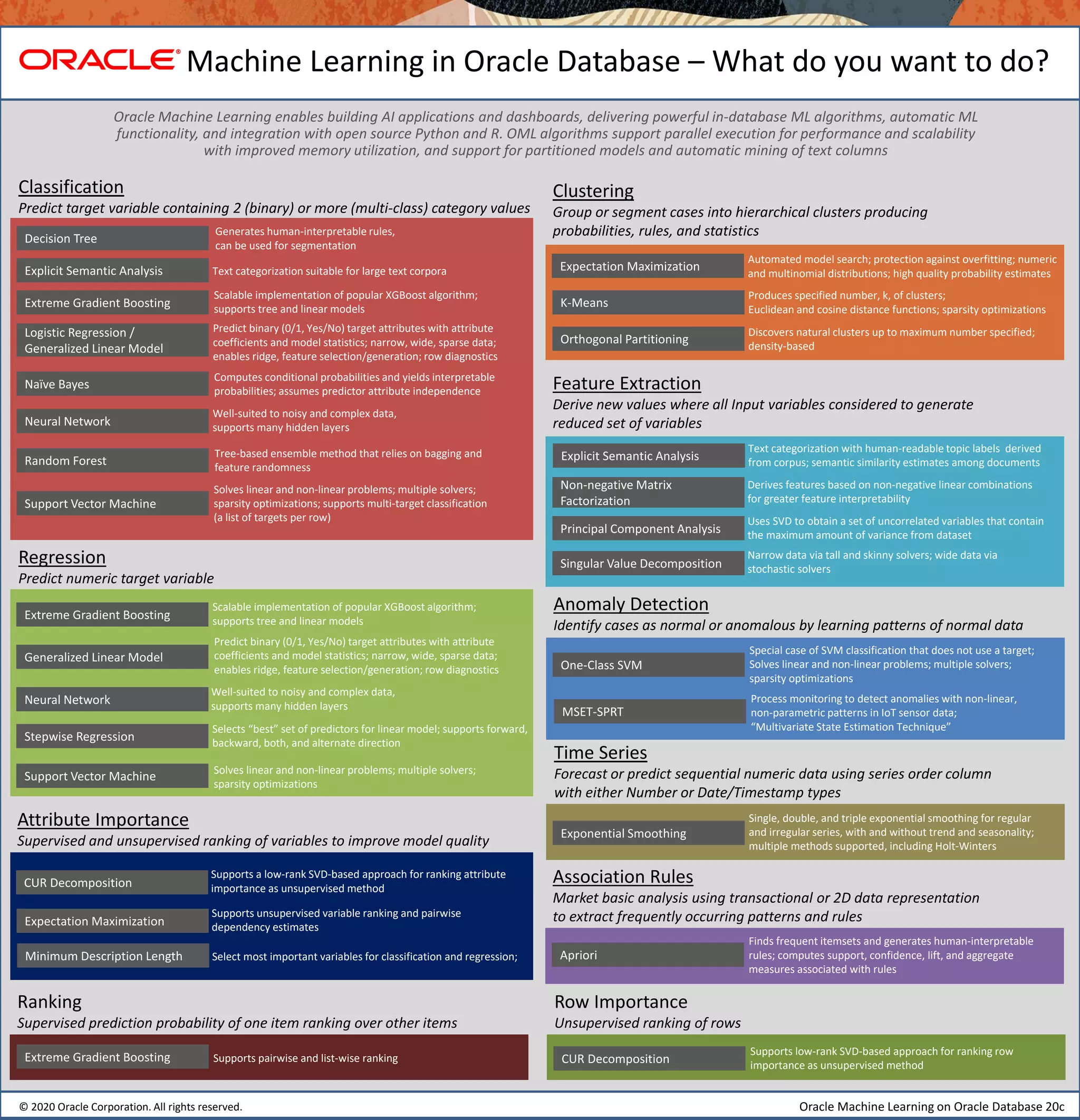This document provides an overview of the machine learning algorithms available in Oracle Database for tasks such as classification, regression, anomaly detection, clustering, and feature extraction. It lists algorithms for decision trees, random forests, naive bayes, support vector machines, logistic regression, neural networks, association rules mining and more. It also describes algorithms for time series analysis, dimensionality reduction techniques, and text mining.
